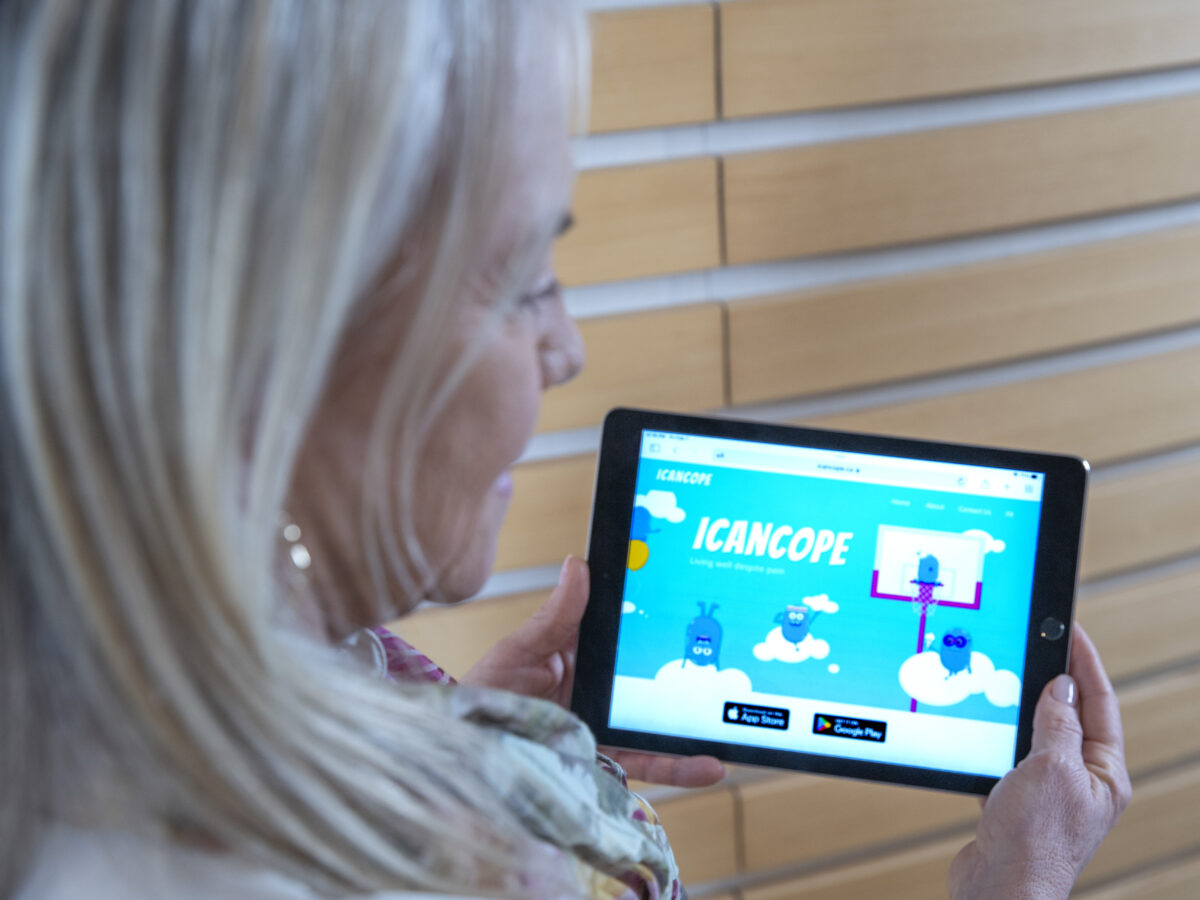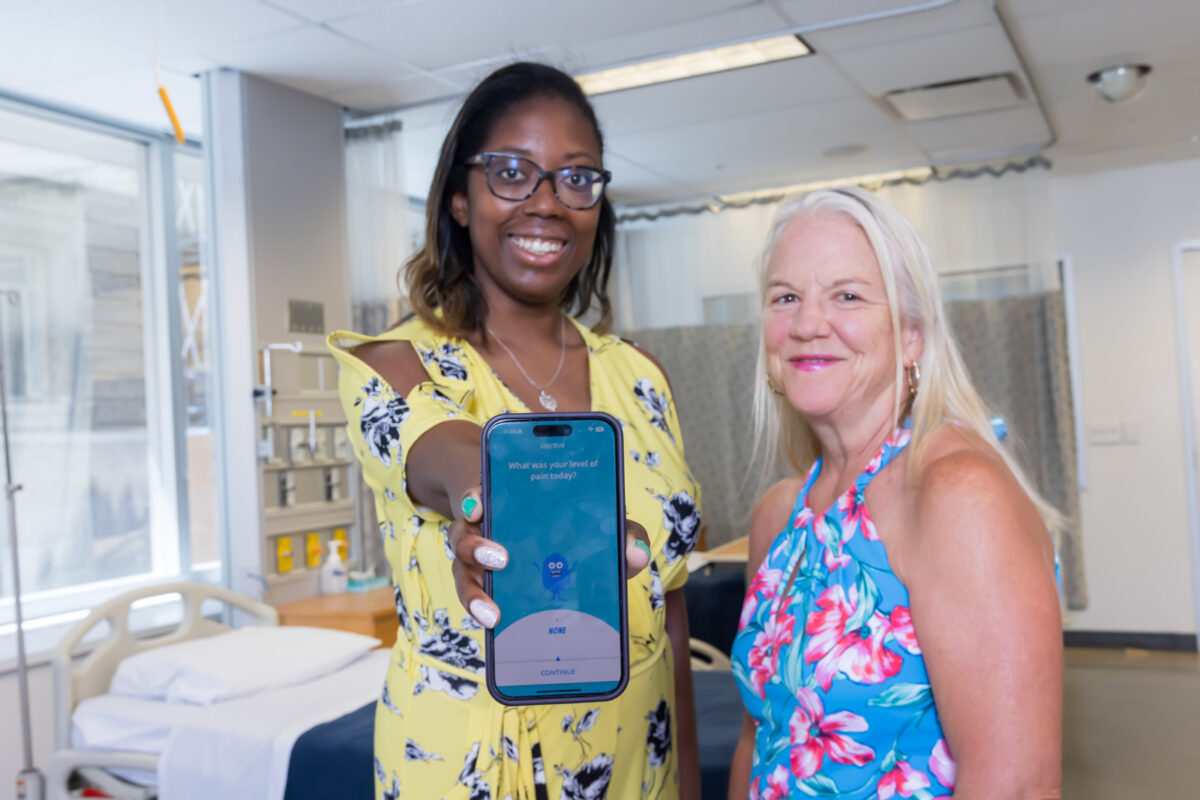Stinson is the first nurse scientist to receive a Gairdner award in recognition of her innovative digital interventions.
Jennifer Stinson, (MSc 1992, PhD 2006) a professor at U of T’s Lawrence Bloomberg Faculty of Nursing, has won the prestigious Peter Gilgan Canada Gairdner Momentum Award.
The award, presented by The Gairdner Foundation, is given annually to mid-career researchers in Canada whose work has had a fundamental and lasting impact on human health.
Stinson is the first nurse clinician scientist to ever receive this award, emphasizing the key role of nurse scientists in addressing the complex health care needs of various populations. Stinson is recognized for her scientific contributions in the field of pediatric pain specifically her use of digital interventions – such as mobile apps, virtual reality, and robotics – to improve chronic pain management in children.
“Receiving the Peter Gilgan Canada Gairdner Momentum Award is an incredible honour. It validates the important work we are doing in pediatric pain management and the need to continue advancing digital health interventions,” says Stinson, who is a nurse practitioner and senior scientist at The Hospital for Sick Children (SickKids) and the Mary Jo Haddad Nursing Chair in Child Health.
Realizing nurses can make a difference
Researching chronic pain in children, and ways to improve it, has become the cornerstone of Stinson’s life work. It was during her PhD at Bloomberg Nursing at U of T where she first developed the chronic pain program at SickKids, the largest pain clinic in Canada, and one that is still in use today.
“I was motivated by the difference nurses could make in pain care of hospitalized children,” says Stinson. “Health care providers are not taught how to manage or treat pain in children very effectively and when we don’t intervene, these children have a reduced quality of life and become adults with chronic pain, often living with negative outcomes.”
Stinson has focused her scientific research in line with the Lancet Commission’s four transformative goals for pediatric pain – to make pain matter, understood, visible and better.
“Professor Stinson is an exceptional researcher in the field of pediatric pain management, and her exemplary work is deserving of this honour from the Gairdner Foundation. Her work is not only moving the future of pain management forward, but it also demonstrates the impact of nurse-led innovations in clinical care, and nursing expertise on human health care policies,” says Robyn Stremler, dean of the Lawrence Bloomberg Faculty of Nursing.
Using smartphones and robots to cope with chronic pain
Stinson’s most recent work has focused on youth living with sickle cell disease (SCD) who experience recurrent chronic pain. iCanCope, a smartphone and web-based app program was developed by Stinson and her lab to provide young people with SCD skills to self-manage their pain including personalized CBT-based coping mechanisms like deep breathing, and relaxation techniques, in addition to goal setting and social support from peers in the form of a communication platform.

Following positive findings for the app’s use in a randomized controlled trial, Stinson has received funding from the Canadian Institutes of Health Research (CIHR) to conduct an implementation study in sickle cell clinics across Canada to improve access to the pain management tool.
Many of the digital interventions that Stinson has developed or studied have been purposely embedded into clinical practice to ensure they are easier to implement into a child’s care.
MEDi the humanoid robot, was a digital innovation Stinson introduced to young oncology patients at SickKids in a 2017 study. The singing, dancing, robot, which still operates in the SickKids ER, helps to calm children’s anxieties and stress around such medical procedures. Her other projects including Pain Squad, an app that uses gamification to helps kids track their cancer pain and iPeer2Peer, a virtual mentoring program that matches teens with young adults with the same condition, are uniquely co-designed with patients, families and clinicians.

“Most research takes 17 years or more to make it into the hands of patients, that’s a generation of children potentially not benefitting from innovative work. It is why my team uses implementation science methods to scale and spread our interventions to improve access to evidence-based pain care,” says Stinson.
Nursing researchers are the future of pain care
In addition to being recognized for her research the Gairdner also acknowledges Stinson’s dedication to training the next generation of pediatric pain researchers and clinician scientists, especially those with a nursing perspective.
“I think most people do not realize the variety of leadership roles that nurses play in the health care setting,” says Stinson. “I am lucky to have the best job in the world, where I get to work as a nurse practitioner in the Chronic Pain program at SickKids and use my research to address the priorities of Canadian youth living with chronic pain.”
